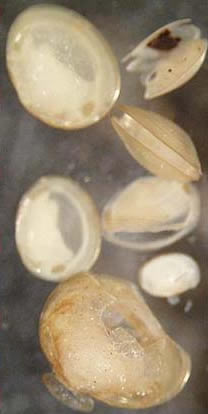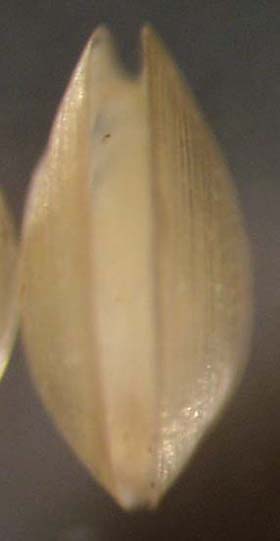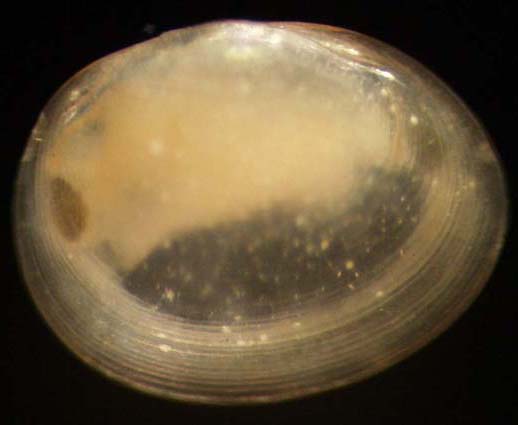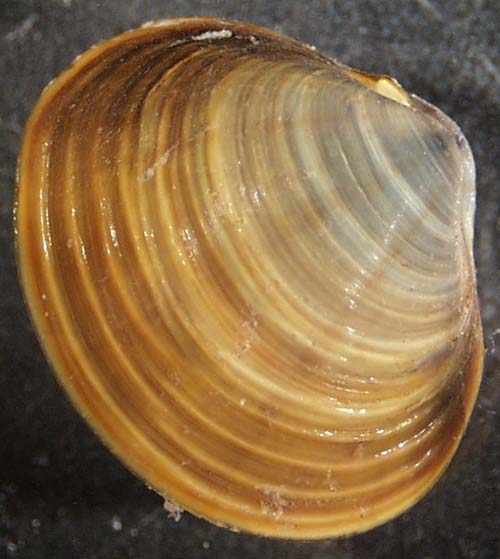
THE XERCES SOCIETY FOR INVERTEBRATE CONSERVATION Aquatic Invertebrates in Pacific Northwest Freshwater Wetlands |
| Identify taxa |
|
Suborder Veneroida There are several species of Veneroida in the Pacific Northwest; most native species are very small. The Asian clam Corbicula, which is not comonly encountered in wetlands, is larger. The Veneroida are collectors, either filtering organic material from water while they remain stationary or gathering organics as they burrow through substrates. Pisidiidae or fingernail clams are very small and diffcult to differentiate. They get damaged very easily by preservatives and in transport, thus further complicating their identification. There is even some debate over the family name Pisidiidae. They are often called Sphaeriidae, which is also the name for the minute bog beetles. The most notorious bivalve invaders in the US are part of the Veneroida. One, Corbicula, is already well established in the Pacific Northwest, sometimes blanketing sections of river bottom. The other, the zebra mussel or Dreissena, could spread to the Pacific Northwest could cause problems for native biota and for humans in the not too distant future. |
| Sphaeriidae (fingernail or pea clams) shells are rounded, small and fairly delicate, without raised growth rings |
    |
||
| Veneroida uncommon in wetlands |  |
||
Sphaeriidae |
|
© 2007 Xerces Society
Contact info@xerces.org